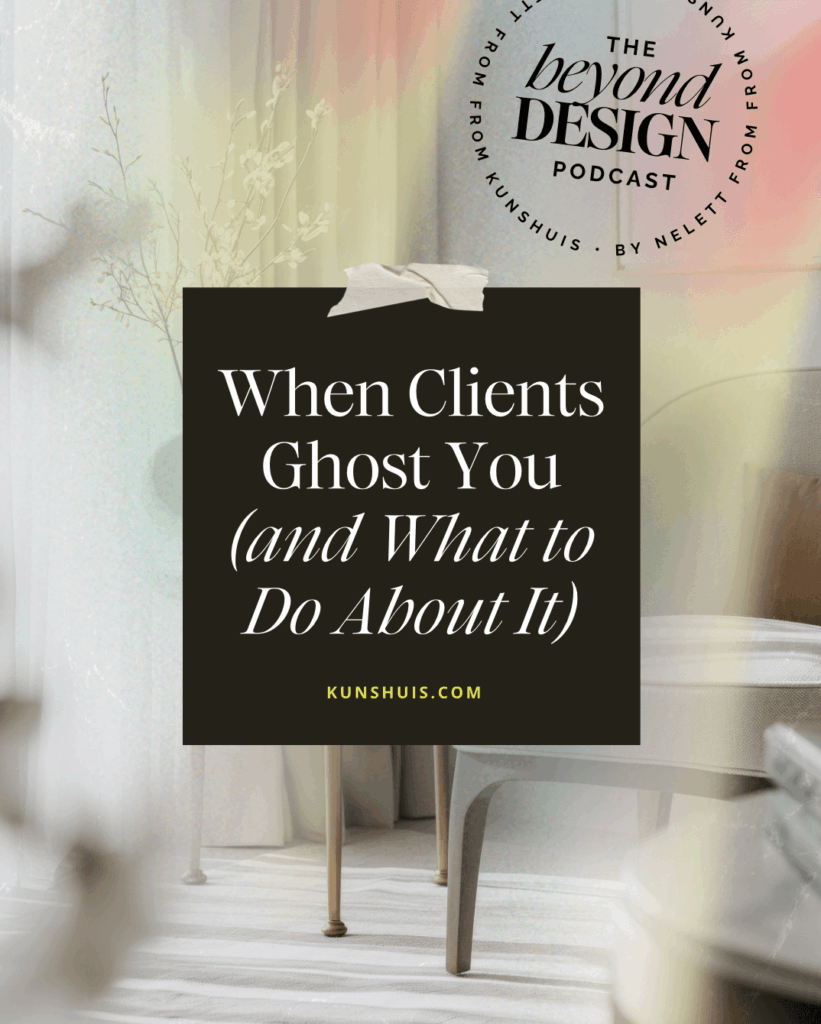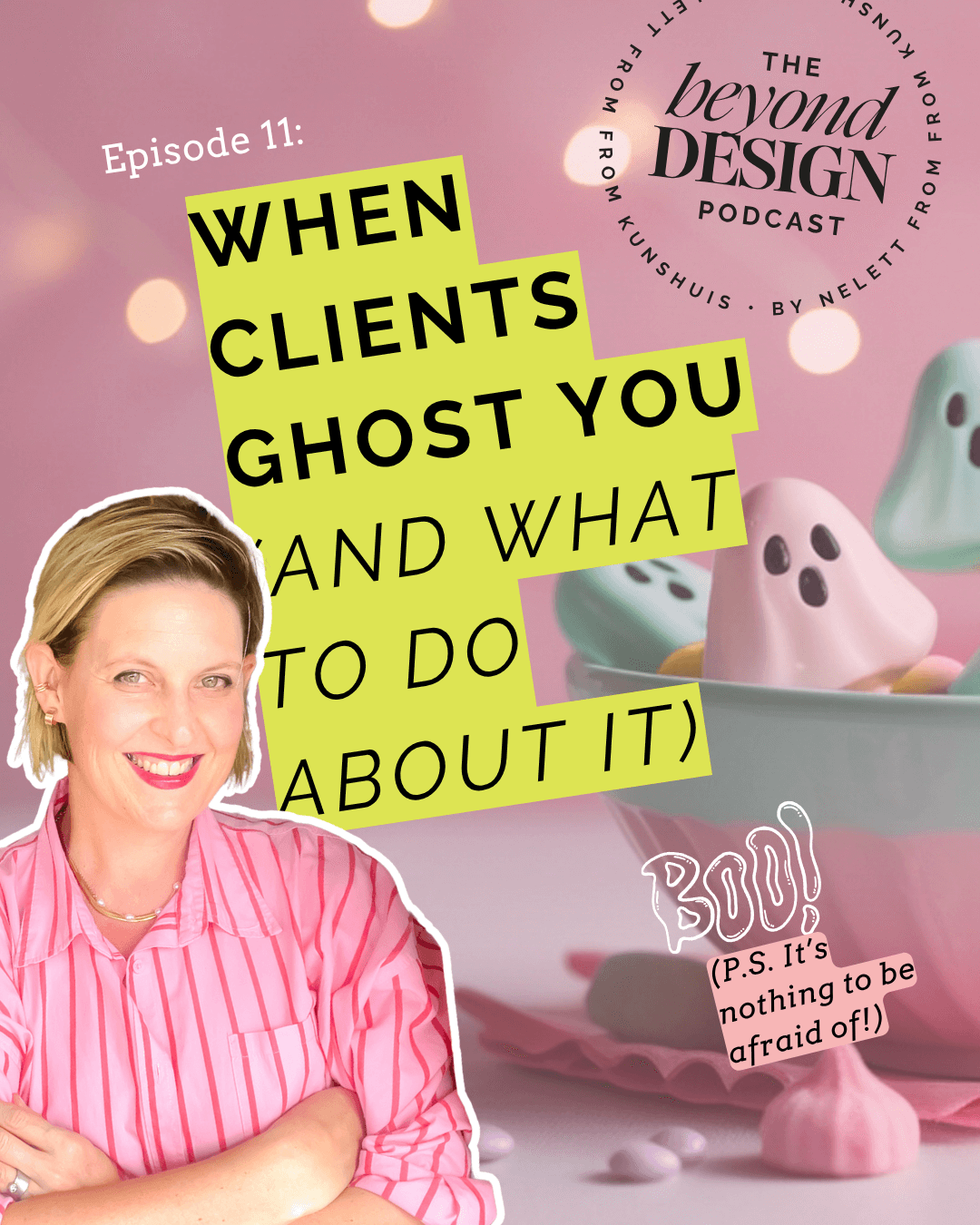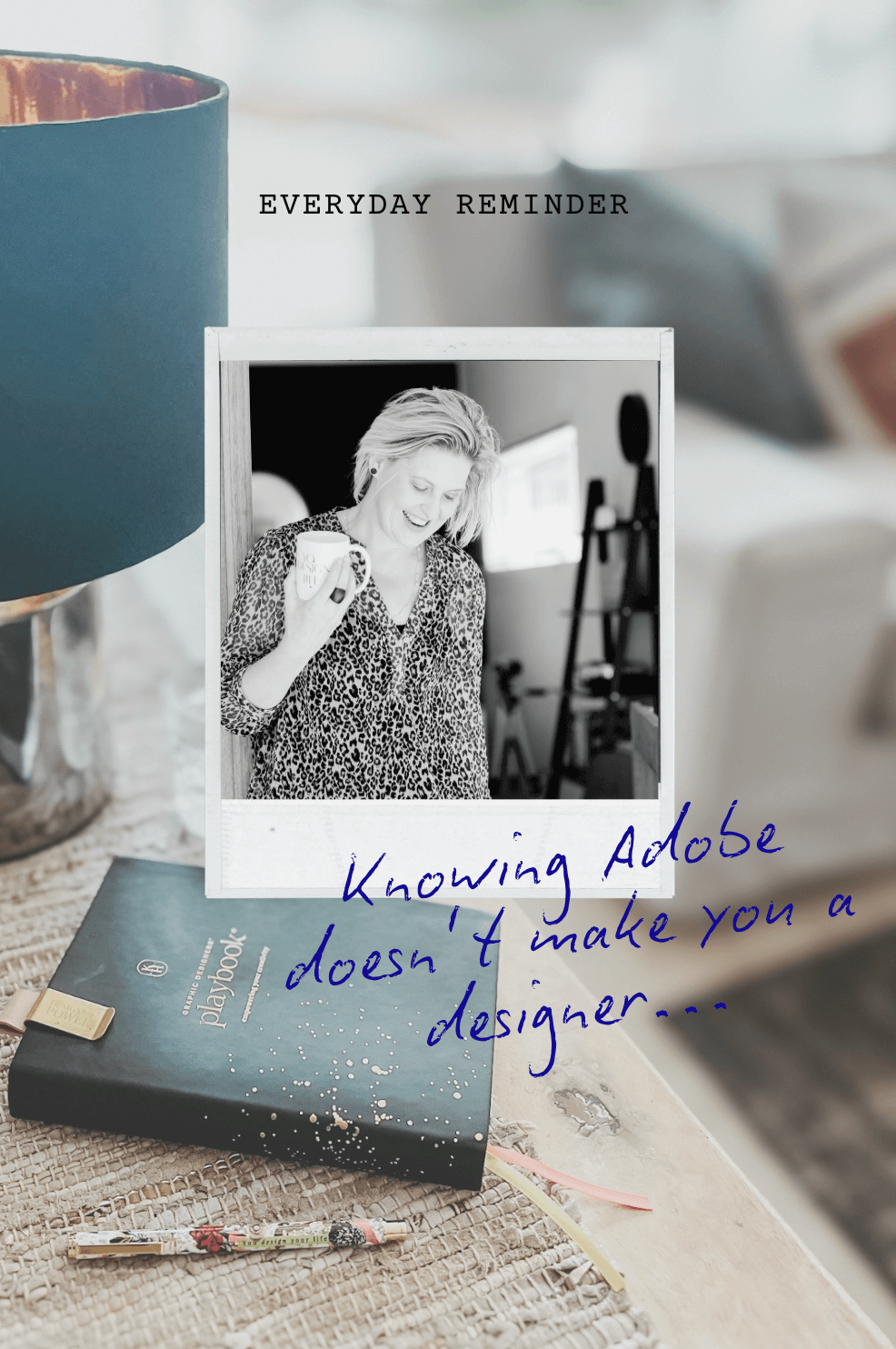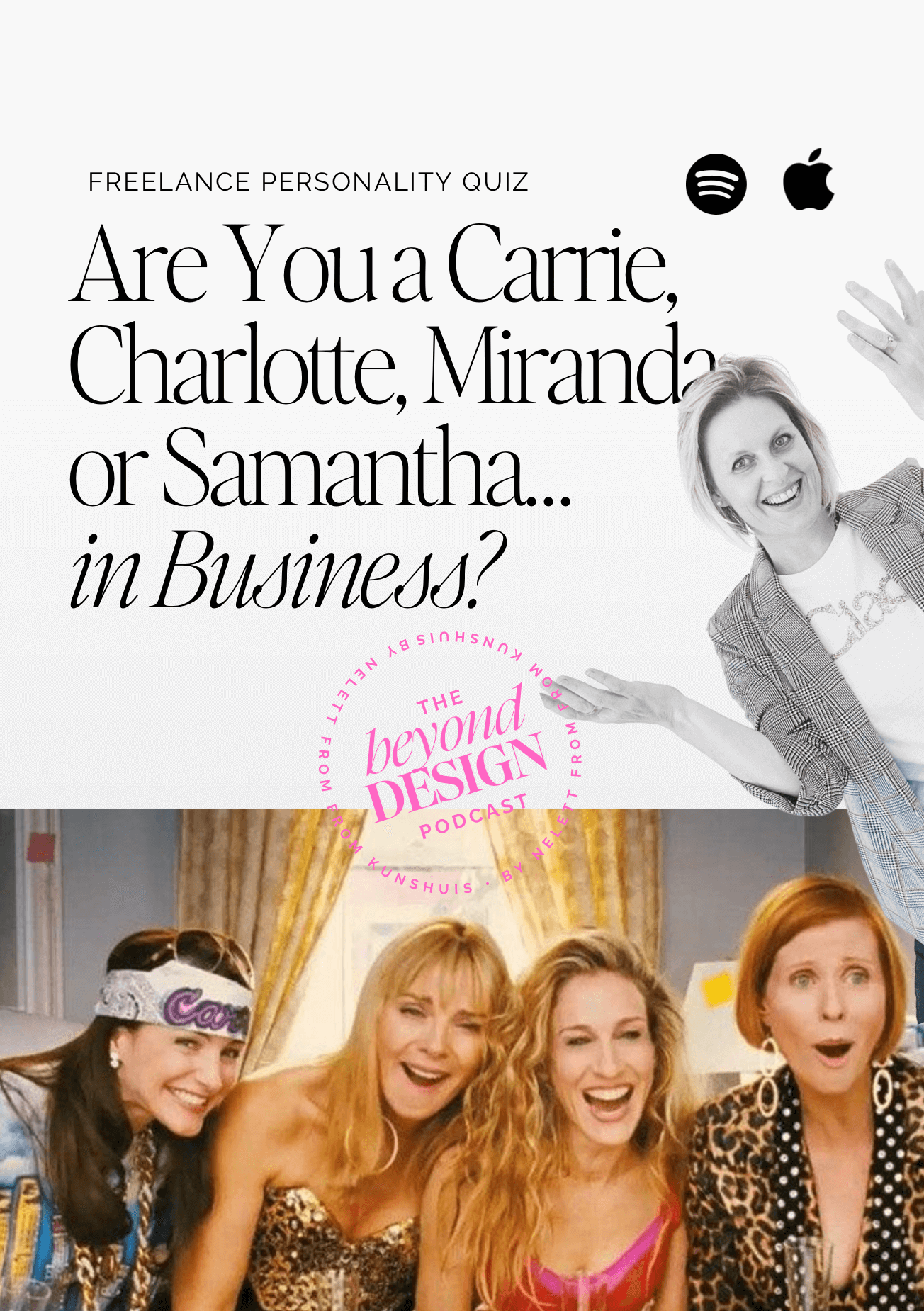
How to protect your peace, trust your process, and move forward when the inbox stays silent.
Listen on APPLE PODCAST | SPOTIFY
Let’s talk about the silence.
Not the kind where you breathe deep and refill your cup.
The other kind.
The silence after you’ve sent a design.
Or a quote.
Or that killer concept you were so excited about.
And then… nothing.
Just grey ticks.
No “thank you.” No feedback.
Just digital tumbleweeds.
Client ghosting.
It’s one of the weirdest, most uncomfortable things about working for yourself—especially when you’re someone who cares.
And let’s be honest, if you’re here reading this, you’re probably one of those creatives who really cares.
The part I don’t usually say out loud
I used to take ghosting very personally.
Like bruised-heart, is-it-me?! levels of personal.
I’d replay every message I sent.
Was I too direct?
Too expensive?
Too slow?
Too Namibian?
That last one is real.
Sometimes I’d wonder if my accent or my slightly-too-kind tone made me sound unsure or “less polished.”
(But you know what? I’ve since learned that warmth is a strength. And that not sounding like a corporate robot is a good thing.)
And while I used to spiral in those moments…
Now I make tea.
I breathe.
And I remember this:
Ghosting is rarely about me.
It’s about them.
Their timelines. Their fears. Their budget. Their boss.
Sometimes their nervous system going into shutdown.
And sometimes—yes—it’s about my process.
Which is actually good news, because process you can fix.
Why ghosting happens (even when the project felt amazing)
Most ghosting doesn’t come out of nowhere.
It usually starts before the silence.
👉 A vague brief.
👉 No clear decision-maker.
👉 No deposit or timeline.
👉 That “quick chat” that somehow became a full project without structure.
Sound familiar?
Here’s the truth:
Clients ghost for all kinds of reasons that make sense to them.
- Their budget got cut.
- Their boss left.
- They didn’t know how to say, “We’re not ready.”
- They’re scared of disappointing you.
- They think ignoring it will be easier than replying honestly.
And maybe you’ve done this too, in other areas of life.
I know I have. 🙋♀️
So what do we do about it?
I’ve stopped reacting emotionally (well, mostly 😅)
And started designing soft systems that hold me—even when clients don’t.
Here’s what I’ve learned:
1. Clarity before creativity
Before we start vibing, we get clear.
What’s the actual problem we’re solving?
Who gives feedback?
What’s the budget really?
And what happens if the project pauses?
Ask the awkward questions up front.
It makes the quiet parts less scary later.
2. Deposits are a boundary and a blessing
No more “I’ll just start now and invoice later.”
Been there. Regretted that.
A deposit = shared commitment.
It doesn’t mean they won’t ghost, but if they do, you haven’t worked for free.
3. A rhythm doc saves lives (and sanity)
Mine includes:
- Where we talk (pick one place—email, WhatsApp, Notion).
- How long they have to give feedback.
- What happens when things go quiet.
- A re-activation fee if a project sleeps too long.
- A soft clause that says, “If life gets hard, just tell me—we’ll adjust.”
It’s not cold. It’s clear.
And it means I don’t have to guess what happens next.
4. Name the ghost
On your kickoff call, say it with a smile:
“Sometimes projects go quiet, and that’s okay. If that happens, I’ll check in gently. No pressure. No stress.”
You’d be surprised how that tiny sentence takes the shame out of the silence.
What I do when the inbox stays quiet…
First, I feel it.
The tight chest, the tension.
Then I pause.
Feet flat. Hand on heart.
I remind myself I’m human.
And then I send gentle nudges:
✉️ Day 3–5:
“Hey [Name], just checking in—did my last message land? Totally get that things get busy. Let me know when you’re ready to pick it up again.”
✉️ Day 7–10:
“Hi! If timelines shifted, totally okay. I can pause the project or we can hop on a quick call to realign. What feels best?”
✉️ Day 14:
“I’m parking the project for now to protect both our calendars. When you’re ready, just say the word. I’ll send the next available start date.”
They’re kind. They’re clear.
They don’t chase.
They open the door—without forcing it.
If they never come back?
Here’s what I do:
- Close the file.
- Bless them.
- Take a walk.
- Tap it out (literally—EFT is magic).
- Drink something that isn’t a double espresso.
- Then… do one thing that moves my business forward.
Because you are not at the mercy of one inbox.
And your confidence doesn’t need to live in someone else’s reply.
Want to avoid ghosting in the first place?
Steal these lines:
💬 On your enquiry form:
“Kind, clear process. Flexible where life needs it. I respond within 24 hours, Monday–Friday.”
💬 In your proposal:
“If I don’t hear back in 10 business days, the project will gently pause to protect your budget and my calendar.”
💬 In your invoice:
“Final files are released once full payment clears. Need a payment plan? Let’s talk before the delivery date.”
💬 And my favourite:
“I’m your partner, not just your designer. If something gets hard, just say so. No shame.”
Say them early. Say them kindly.
They’ll save you from a lot of late-night spirals.
For my fellow people-pleasers 🙈
Hi. I see you.
I am you.
Here’s what changed everything for me:
- One place for comms
- Office hours I actually keep
- Email templates I reuse (hello, Playbook!)
- Deposits before starting
- Community when I feel like quitting
You don’t need to be harder.
You just need to be held by systems that make room for your humanity.
And theirs.
My faith piece (because it matters)
When I get ghosted, the old stories start whispering.
“You’re too expensive.”
“You’re too slow.”
“You’re too much.”
“You’re not enough.”
But I come back to this truth:
God’s plan for my work isn’t based on who replies to my emails.
My job is to show up with heart, clarity, and good work.
The rest?
Out of my hands.
So I pray:
“God, steady my heart.
Bring the right work, at the right time, with the right people.
Help me rest when I’ve done my part.”
Final thoughts (and a small move forward)
If you’ve been ghosted recently,
I want you to know this:
It’s not a reflection of your value.
It’s not a sign that you’re not good at what you do.
And it’s not your fault.
Take what you need from the silence.
Then close the window.
And open the next one.
Maybe it’s a new client.
Maybe it’s just the breeze.
Either way—fresh air.
You’re not alone in this.
You’re building something beautiful.
One clear, soft boundary at a time.
Design your life, wherever you are.
—
🛠 Want the templates and tools to help you feel steady when things go quiet?
Grab the Graphic Designers’ Playbook Planner or the Playbook Desk – your silent partner when business gets a little too… human.


